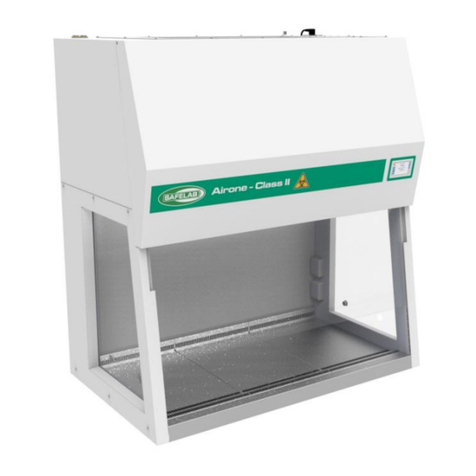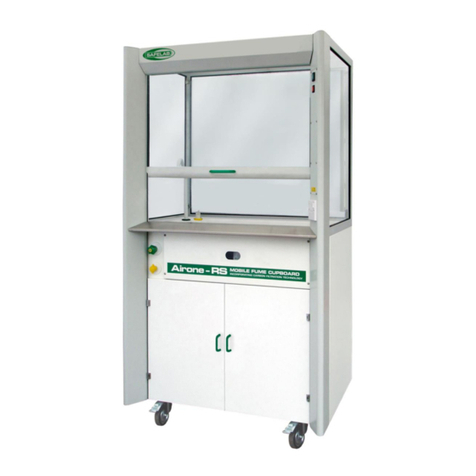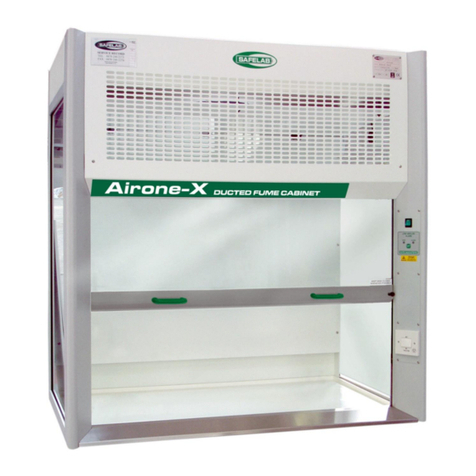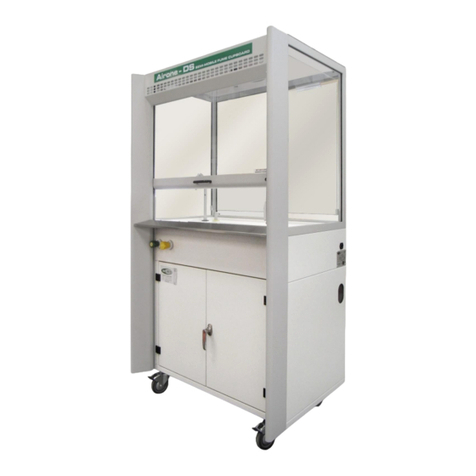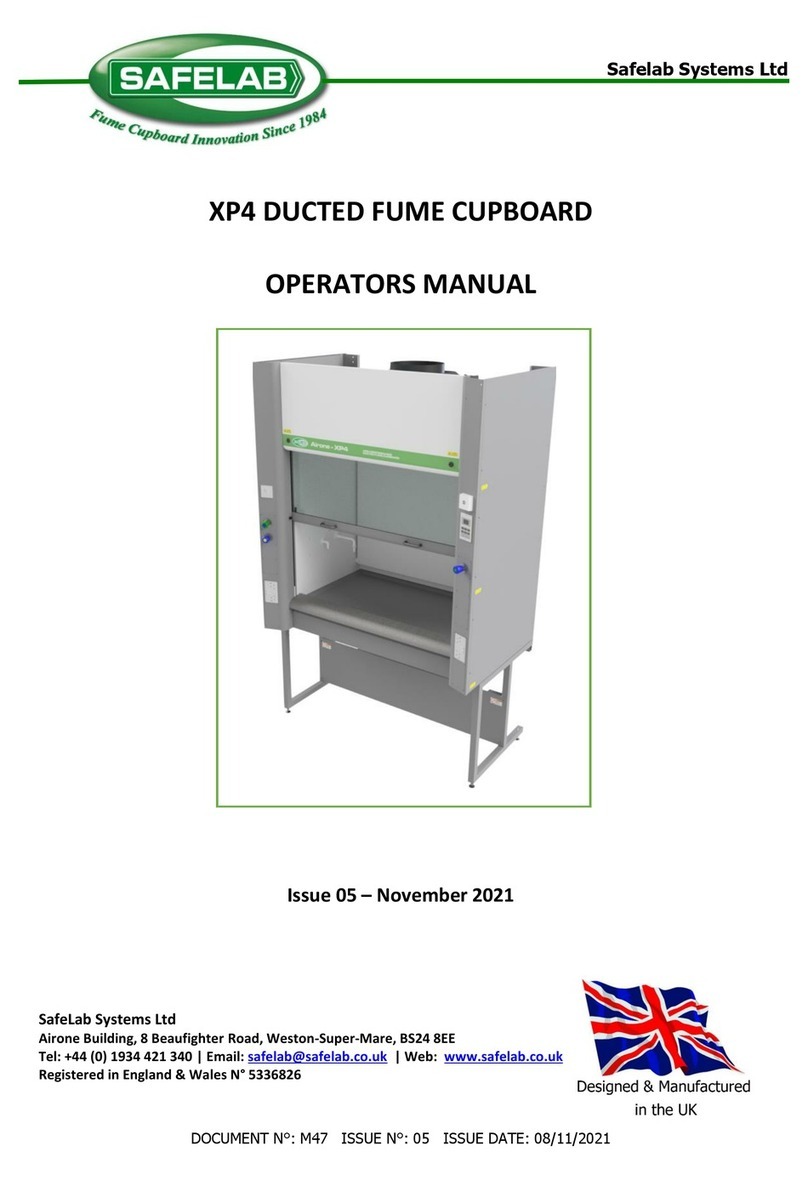
DOCUMENT NO: M37 ISSUE NO: 02 ISSUE DATE: 01/11/2015
SPECIFICATION
Definition: The Airone 1000RS/E Mobile Filtration Fume Cupboard has been designed
to comply with BS7989:2001 for filtration fume cupboards along with
Building Bulletin 88 from the Department for Education and Employment and
has been tested by CLEAPSS.
Application: The unit gives maximum flexibility and can be manoeuvred between
different locations. A counterweighted sliding front sash and clear laminated
glass sides and rear provide 360° all round visibility making this ideal for
demonstrations. Lowering the sash will reduce the airflow and therefore
noise is reduced to a minimum benefiting demonstration.
Construction: Aluminium extrusions and mild steel sheet, welded and painted in epoxy
powder coat, Light Grey RAL-7035 and White RAL-9016. The fume
enclosure is laminated safety glass.
The top panel and rear baffle are clear acrylic.
The suspended/counterweighted front sash is in laminated safety glass with
an epoxy powder coated extruded aluminium handle.
The work tray is white polypropylene as standard.
Sash Operation: The vertical sliding laminated glass sash of the AIRONE 1000RS/E fume
cupboard is suspended and counterweighted providing added advantages
over fixed-sash or folding sash fume-hoods. E.g. the sliding laminated glass
sash can be closed and this provides protection to operators.
The vertical sash conforms to Paragraph 4.12 of the Building Bulletin # 88 of
the DofEE (Rev. of Design Note # 29) and BS:7258 requirements in that the
sash cannot fall if one of the suspending cable-cords is cut.
Moving the vertical sash upwards and downwards causes the fan to speed
up or slow down to give a constant face velocity, this is controlled by a micro
switch.
Filter Housing: The filter housing is located above the lower cabinet doors and contains the
main filter and pre-filter.
Storage Area: Located at the bottom of the unit and accessible by hinged doors with
magnetic catches.
VAV System: The unit has a VAV (Variable Air Volume) system incorporating a filter
saturation alarm. The VAV system ensures that the inflow is constant at
variable sash heights. The control panel is located on the RH side cabinet
aerofoil.
ON/OFF Switch: Illuminated green, and located on the RH side cabinet aerofoil above the
electronic VAV control panel.
Supply: 230V 50Hz - 0.9 A (excluding electric socket load).
Performance: The average inflow at the working aperture is 0.4 m/s.
The minimum working aperture is 200mm high.
The maximum working aperture is 365mm high.
Noise level: 59 dBA






